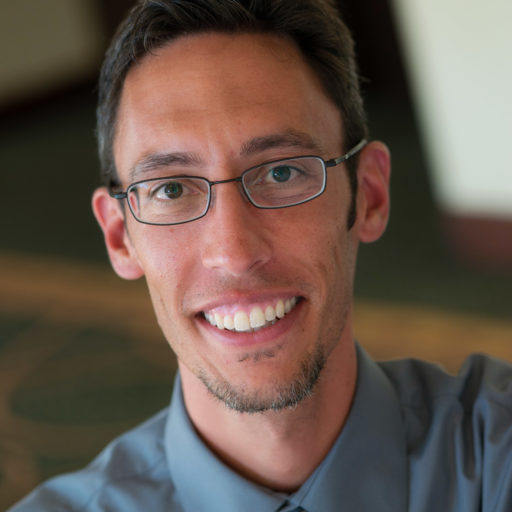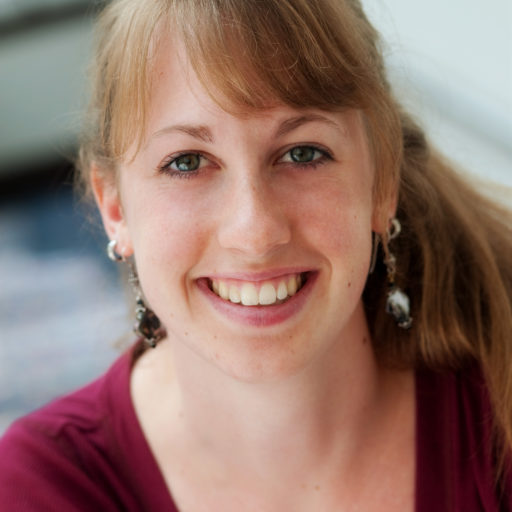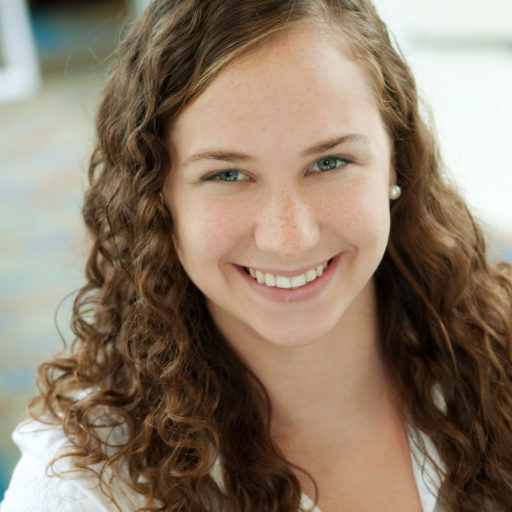At a time when required teacher collaboration is weaving its way into professional responsibilities, we offer a story of a meaningful collaboration that has been maintained for the past three years. With four current members across three school districts in two different states, we work together towards our common goal of helping students learn physics. We have discovered that participating in this kind of high quality group is a sustaining form of professional development, and we believe it has the power to retain quality teachers in the classroom.
We have spent time identifying and thinking deeply about particular practices that we feel would transfer well from our collaboration to various contexts. We hope that by sharing our experiences we will empower others to start or strengthen a collaboration.
THE BEGINNINGS
Imagine the following scenario:
You are a second year teacher, new to the school and county. You struggled to do labs with students last year. You have students for a two-year course; your incoming seniors had a different teacher for the first year of the course already, and you only vaguely know what he taught them. These are not your only two preps—you have a third course to plan for.
You will have students who are mastering calculus and students who are struggling in geometry. You will have English language learners, and students with individual education plans. You will have students who love science and students who hate science. You will have students who are already overcommitted and stressed to the breaking point, and you will have students who are disengaged from high school and try to avoid contact with peers.
You need to improve International Baccalaureate (IB) Physics scores, because the current passing rate is extremely low. You need to teach physics through inquiry to meet the vision of an IB course. You need to build relationships with and between students so they feel valuable and connected to school.
In 2011, I (Hotchkiss) faced precisely these circumstances. It is a familiar scenario for many teachers: a classroom with a wide range of learning needs across all spectrums, external pressure for students to perform on high stakes testing, internal pressure to “be there” emotionally for each one of your students, multiple courses to prepare for, and all with a general level of inexperience in the classroom. I wanted teaching to be my career, but I was getting scared because I was rapidly approaching teacher burnout by trying to be a “good teacher” while navigating all of these pressures alone.
That summer, I met Charley Sabatier, Katey Shirey, and Jen Weidman through the Knowles Science Teaching Foundation (KSTF) Teaching Fellowship. We taught at different schools all local to Arlington, Virginia. Jen, like me, was teaching IB Physics for the first time. Charley and Katey had been teaching it for a few years, but always in isolation. We talked excitedly about forming a collaboration, but the concept was very nebulous. Could we bring favorite lesson ideas to share with each other? Could we brainstorm strategies to improve performance on IB lab writing? Could we work on unit tests that model an IB exam?
We arrived at our first meeting cautiously hopeful for a meaningful interaction. At the same time, each of us brought a tangible sense of self-preservation. We were all protective of the time that we would make available to the group, so the conversation was a bit like navigating a budding middle school relationship.
After some negotiation, we tentatively agreed to design and implement our first unit of the year together. Once we decided on this task, one which I was about to sit down and do by myself regardless, I was happy to be a little more liberal with the amount of time I offered for meetings. Our fears were for naught, because once we started planning together, we didn’t stop! We continued co-designing and implementing our common units for both the junior and senior level courses all year.
And the results? A higher percentage of my students passed the IB Physics exam than ever had before at my school. I was able to not only ‘“do labs” but to teach the course through a lens of inquiry, implement opportunities for students to design investigations, and attempt two project-based units. I felt like a much better teacher, and no longer felt on the fast track to burn out.
CHANGE & PROGRESS
In 2011 we started with a commitment to weekly, hour long, in-person meetings to tackle the “bite size” curricular goal of developing common tests, projects, and keystone lab experiences. This was manageable, and it enabled us to develop a shared philosophy for the course.
Since 2011 our collaboration has grown to be something truly special. Through the years, positions changed causing transitions in membership, until our current group of Mark Hartman (KSTF Senior Fellow), Heather Hotchkiss (KSTF Teaching Fellow), Kate Miller (KSTF Teaching Fellow), and Christine Scott (colleague of Weidman and subsequently Miller) was formed. There are three additional members in the process of joining as this article is being written. We are still bound together by a common commitment to quality teaching and learning. However, our instruction has become progressively more studentcentered and differentiated. In the same way, our assessments have become formative, objectives-based, and focused on developing student metacognition.
We continue to meet weekly but do so virtually. Each meeting starts with prioritizing the agenda (which we pre-populate throughout the previous week) and assigning time cues to keep the meeting on track. Typical agenda items include: developing a common storyline for the unit; reviewing a test, worksheet, or lab; and looking at our common assessment results. We have also grown to be able to discuss topics like how to integrate literacy strategies in our lessons and how to scaffold the skills necessary for students to design a rigorous investigation. At the end of each meeting, action items are assigned for the following week using another group determined protocol.
Various forms of technology are used to support the collaboration. Google Hangout serves as the virtual platform for the meeting, Google Documents and Spreadsheets provide a common space for us to contribute in real time, and Dropbox provides a folder structure for organizing our shared instructional materials.
How did we get from point A to point B?
ARTICULATING NORMS
During the first year, our group developed ways of working together that facilitated a strong collaboration. We decided to try to articulate these as norms in order to share them explicitly with new members joining the group in the summer of 2012.
Our four norms were and still are:
- We are committed to staying in alignment with each other because it enables our collaborative community to be more powerful.
- We make decisions by consensus, because of our commitment to alignment, and because it challenges what we take for granted.
- We are open minded towards the ideas of all group members, respecting that their ideas are as valid as our own.
- We believe that reflection is critical to growth and supports continuous improvement.
These norms were not decided upon, shared, and then forgotten. They continue to be lived out each week. These “norms in action” have created an environment where different personalities and different opinions can work cohesively towards a common goal.
NORMS 1 & 2 IN ACTION: LOCKSTEP AND THE STORYLINE
Although the initial plan was to work at the unit level by agreeing on major learning activities and common assessments, it became apparent that we could get more “bang for our buck” if we became even more aligned. When we all taught the same lessons, one hour of work per person meant four hours of product in return. By the end of the first year we had aligned the general sequence of instruction and content of weekly lessons. Now, we are aligned on all daily lessons. Things like designing assignments, thinking through activities and labs, writing tests, etc., are individual action items. We check for quality by reviewing the completed action items as a team.
Most of us are very independent thinkers, so initially the concept of teaching in “lockstep” was unnerving. However, we found that reaching consensus about our vision for the unit ensured that none of us felt we were being told what to teach or how to teach it.
We know when we plan any given unit we all bring a prior storyline to the table, whether it is how we previously taught the material or how we learned it ourselves. We reach consensus by working together to turn our individual storylines into one that is shared. The storyline is not a list of activities nor daily lesson plans, rather it is the cohesive order in which we believe the concepts and skills should be taught to best meet the pre-determined IB standards. For example, in our introductory waves unit we had to decide whether to 1) teach wave characteristics and behaviors first, then spiral back to wave calculations and graphs or 2) teach wave characteristics and behaviors with embedded relevant calculations and graphs.
If you listened to us develop the storyline you would hear phrases like “I wonder about…”, “Convince me that…” and “I disagree because…”. Discussions can be contentious—an uncomfortable but necessary feeling when our goal is to reach a true consensus about the best way for students to learn the content. In the end, the agreed upon storyline will drive construction of the rest of the unit. It serves as the basis of daily lesson plans and motivates the assignment of relevant and useful action items.
NORMS 3 & 4 IN ACTION: REFLECTION PROTOCOL
Although we have had successes, we have also had problems. Some of our first issues were our inefficient use of meeting time, the inequitable distribution of work, and the distrust in each other to follow through with quality on the action items. Each of these issues was very real. If they had not been addressed in a timely manner, they had the power to derail our group.
We believe that there will always be conflict when a group of people comes together to work, although the points of contention will evolve with the group. Instead of ignoring the conflict in ours, we try to embrace it as a way to grow and strengthen. Each month, we engage in a “reflection protocol” which creates a safe space to voice concerns about how the collaboration is going.
For our reflection protocol we each write individual responses to a prompt¹ , and then silently read each others’ responses. After we have read all responses we discuss the patterns we noticed, things that stood out to us, and things we need to change. It is as if the responses are data, and we are pulling out trends from that data. Treating concerns as “data points” disconnects them from the authors, facilitating a greater degree of risk-taking in our conversations.
We believe that the reflection protocol is a powerful place for a new or improving group to start because this will help a collaboration meet the needs of its members. Our ability to overcome the challenges described in the following section resulted largely from implementing this reflection protocol.
OVERCOMING CHALLENGES
Because we want this story to empower others who are considering or attempting collaboration, we want to be transparent about the fact that this has been a long journey for us. We will end by outlining some of the logistical challenges we had both in adding new members and in building trust. Overall we share the following idea as a guideline: Collaboration is a problem in creative engineering, constrained mostly by the time we can give. That time must be spent carefully to meet the needs of all members, to ensure buy in and, eventually, trust.
Since the beginning we have added five new members (not counting the three that are currently joining). These new members have only sometimes been other KSTF Fellows and have spanned a large range of prior teaching experience. Two of the five chose to leave our group mid-year. We believe we may have asked too much of these teachers too quickly. We are now more careful about spending out-of-meeting time preparing a teacher for the philosophy, the protocols for our group, and the logistics of inquiry style lessons. In addition, we now allow new members to get their sea legs by simply participating in meetings until they articulate that they are comfortable taking on action items. The current challenge for our growing group is learning how to strike a balance between getting new members on board with the existing nature of the collaboration and keeping meeting time sacred and valuable to veterans who want to push to be innovative and metacognitive.
Because we want this story to empower others who are considering or attempting collaboration, we want to be transparent about the fact that this has been a long journey for us.
The biggest barrier to developing trust was dealing with the fear that others would not follow through on action items with a high quality product that was “classroom ready.” Early on our meetings were inefficient, so we would run out of time to discuss our collective expectations for all action items. We have become more efficient by developing a cycle for curriculum development. For us this cycle is refining our objectives, developing the unit storyline, approving the test, constructing daily lesson plans, and then assigning action items for revising/creating specific curriculum pieces. This process might look different for other collaborations, but we feel having a plan is the place to start. Our focused meetings have created space for in-depth conversations in which we define our expectations for all action items. Over time this has led to increased success with action items, and ultimately to deep professional trust in the group.
CONCLUSION
We believe that the quality of our shared work is better and allows for more differentiation than anything we could have created on our own. We believe the discussion of the “storyline” for each unit is professionally satisfying and uncovers subtleties in the art of teaching, enabling us to grow our collective pedagogical content knowledge. We believe that the teaching profession must overcome the status quo of accepting isolation in order to make our profession more sustainable and attractive to thoughtful, high quality educators.
In summary, we believe the following to be most transferable to others in a collaboration:
- Reach a consensus on your common vision for instruction.
- Intentionally create a regular time to check in on the health of the group.
- Value the time that you dedicate to the group by allocating it thoughtfully
We are hopeful that elements of our story will serve as an inspiration for you to bring to your own collaboration context.
ACKNOWLEDGMENTS
The Knowles Science Teaching Foundation has played an essential role in helping to develop our collaboration.
As KSTF Teaching Fellows we have had opportunities for training in a variety of best practices such as Patterns Approach to Physics, Modelling Physics, Process Oriented Guided Inquiry Learning (POGIL), and Project-Based Learning (PBL) that have influenced our collective teaching style. We also share a commitment to the kinds of professional interaction that formed the core of our norms.
In addition, Sabatier authored several KSTF leadership grants proposals to support:
- Meals at monthly reflection meetings and for summer workshops
- Travel for out of town group member for summer workshops
- A common textbook for us to use as teachers
- Subscription to a shared platform for formative assessments
- Materials to do common labs
Finally, Hartman, Hotchkiss, Miller, and Sabatier have received professional development grants to support their presentation of findings at National Science Teachers Association (NSTA) and American Association of Physics Teachers (AAPT) conferences.
FOOTNOTE
¹Some examples of reflection prompts include: What’s a gold standard professional learning community (PLC)? How are we doing? Where do we want to get to? How do our processes work now? How can we improve to make our collaboration more efficient?
Mark Hartman is a Knowles Senior Fellow who teaches physics in North Carolina. He taught students at a variety of high schools in Boston and North Carolina and has worked with other teachers in the Knowles IB Physics group for three years to develop engaging curriculum for students in four different schools.
Heather Hotchkiss is a 2010 Knowles Teaching Fellow. She is a physics teacher in Virginia and has been working with the IB Physics group since 2010, along with working with other teachers in her school and district to develop engaging physics lessons.
Kate Miller is a 2012 Knowles Teaching Fellow who teaches physics in Virginia. Her attraction to and curiosity about gymnastics fueled her initial interest in physics. Kate hopes to help her students ignite a similar sense of curiosity towards physics as well as develop a love of learning. She has been working with the Knowles IB Physics group since 2012.






